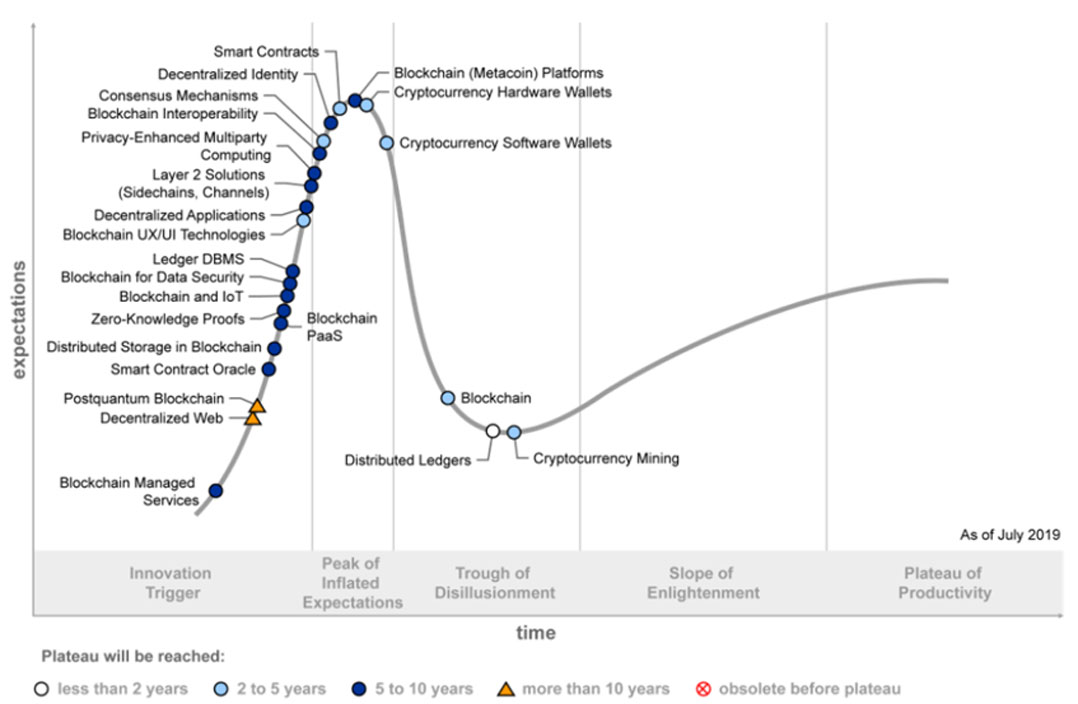 Blockchain technologies, on which cryptocurrencies like bitcoin are based, will take up to 10 years before they have a transformational impact, analyst firm Gartner said on Tuesday.
Blockchain technologies, on which cryptocurrencies like bitcoin are based, will take up to 10 years before they have a transformational impact, analyst firm Gartner said on Tuesday.
The US-based research firm said its “hype cycle” for blockchain technologies shows that blockchain is “sliding into the trough of disillusionment”, a period that follows a technology being hyped during which expectations drop off (see graphic below).
“The market will begin to climb out of this trough by 2021 as technology advances and pragmatic use cases uniquely supported by blockchain continue to roll out,” the company said in a statement.
The “trough of disillusionment” highlights technologies and markets where interest has waned as experiments and implementations fail to deliver.

“Blockchain technologies have not yet lived up to the hype and most enterprise blockchain projects are stuck in experimentation mode,” said Avivah Litan, distinguished analyst and research vice president at Gartner, in the statement.
“Blockchain is not yet enabling a digital business revolution across business ecosystems and may not until at least 2028, when Gartner expects blockchain to become fully scalable, technically and operationally.”
Scalable and interoperable
For blockchain to become mainstream, Gartner said users shouldn’t have to worry about picking the right platform, the right smart contract language, the right system interfaces and the right consensus algorithms. Also, concerns about how users will interoperate with partners that use different blockchain platforms for their projects must be rectified.
“We are witnessing many developments in blockchain technology that will change the current pattern. By 2023, blockchain platforms will be scalable and interoperable, and will support smart contract portability and cross-chain functionality. They will also support trusted private transactions with the data confidentiality required. All together, these technology advances will take us much closer to mainstream blockchain and the decentralised Web, also known as Web 3.0,” said Litan.
“Over time, permissioned blockchains will integrate with public blockchains, and will take advantage of shared services while supporting the membership, governance and operating model requirements of permissioned blockchains,” said Ms Litan. — © 2019 NewsCentral Media




